
My Belgian family migrated to the United States from Wallonia, the southern half of Belgium, where I have been able to trace them back through official records to about 1600. Thanks to recent research in DNA, I was able to do some genetic genealogy to trace them back even further.
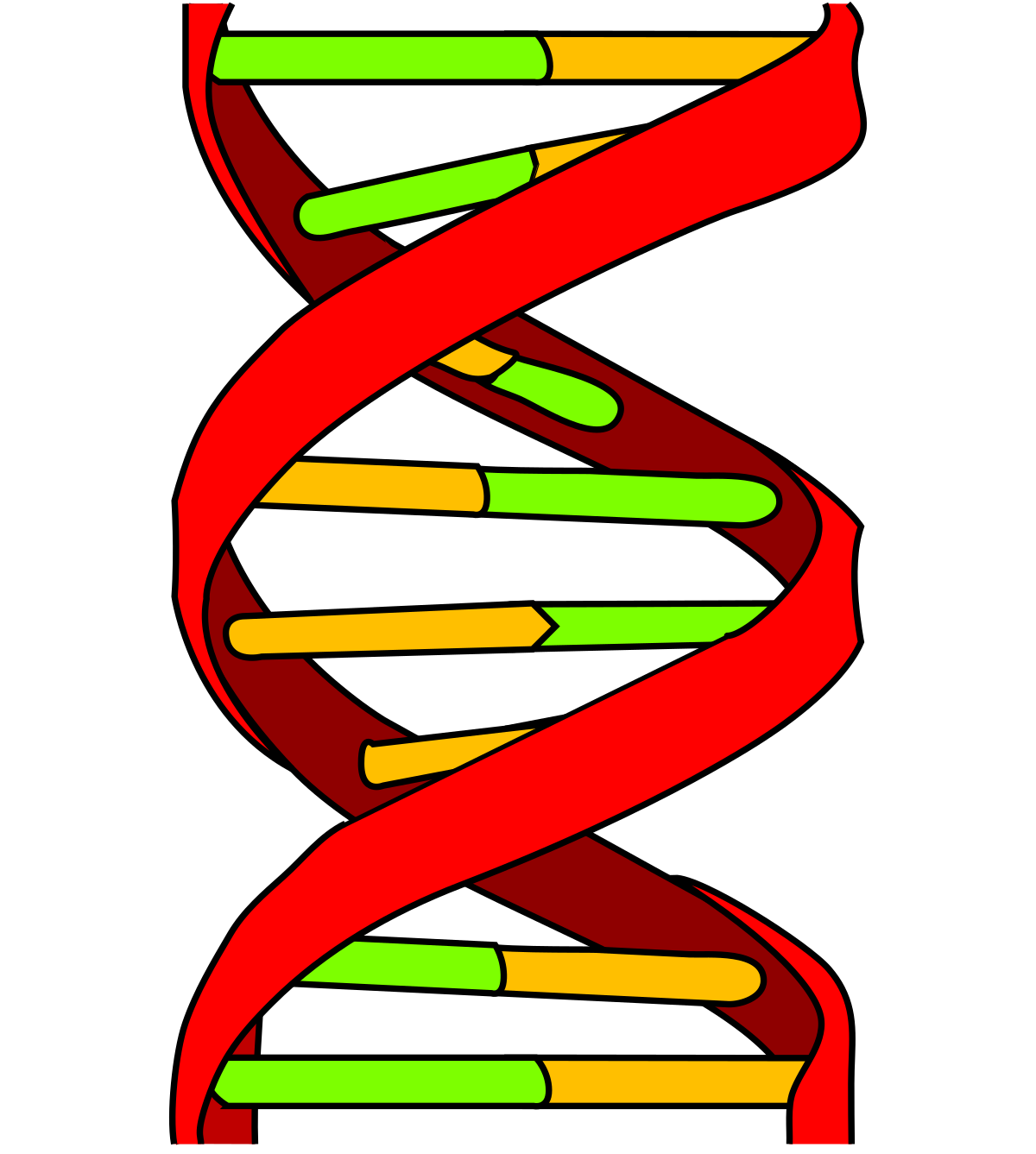 There are sections of our DNA that are dormant; these sections don't seem to hold the key to any specific function any longer. Mutations in these dormant sections seem to occur at a predictable rate. The changes that occur in these dormant sections identify common descendents of the person with the mutation. This is how we differentiate one group of descendents (haplogroup) from another, allowing us to trace our family and their movement through time.
There are sections of our DNA that are dormant; these sections don't seem to hold the key to any specific function any longer. Mutations in these dormant sections seem to occur at a predictable rate. The changes that occur in these dormant sections identify common descendents of the person with the mutation. This is how we differentiate one group of descendents (haplogroup) from another, allowing us to trace our family and their movement through time.
Our mitochondrial DNA (mtDNA) is passed from mother to child, while the Y-chromosome is passed from father to son. Unlike the rest of our DNA, both Mitochondrial DNA and the Y-chromosome are not recombined at conception (no mixing of this stuff between mother and father). This allows us to trace back and identify our maternal and paternal lineages.
It is important to note that these mutations do not follow ethnic, political or social boundaries. They tend to cluster around geographic regions, but they share that region with other groups. The mutations show us our migration as we shared the paths with other families, and even Neanderthals.
By having my mtDNA mapped, I have identified my maternal line (Pirlot, Deprez, Lorimier, Schayes, Vanhamme, Akermans) as belonging to haplogroup K1. Thanks to a cooperative male relative, I found that the Belgian paternal line (Motquin) belongs to haplogroup R1b1b2a.
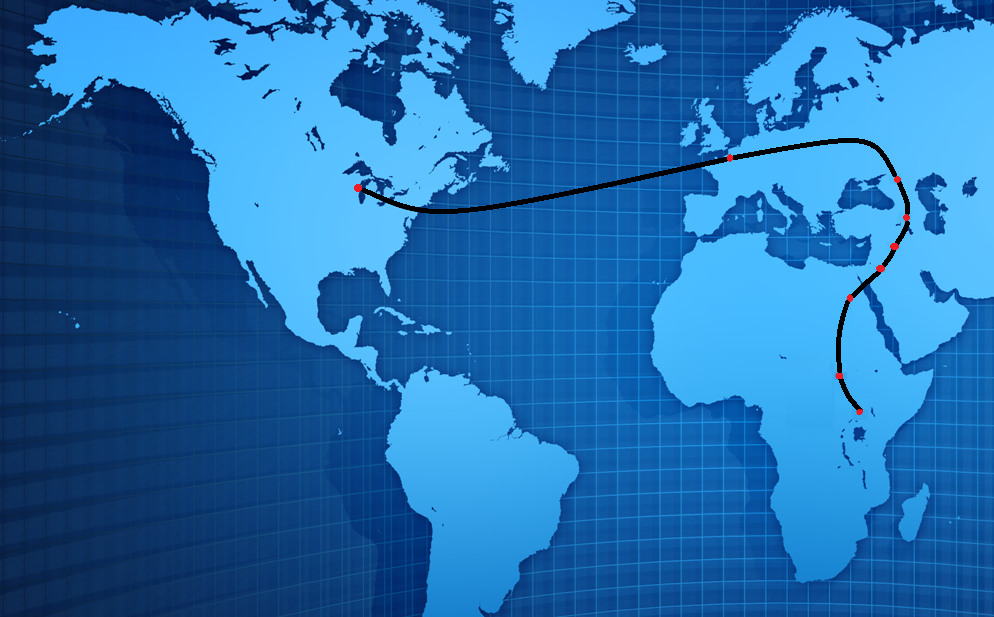
Migration of my Belgian Family across four continents and 150,000 years
![]() Female Lineage in Africa: The Mother of all Mothers (the MoM or Mitochondrial Eve), lived in Africa about 175,000 years ago. Everyone living today inherited his/her mitochondrial DNA from her, which makes her our oldest common grandmother. Mitochondrial Eve is not the earliest female, nor is she Eve from the Bible, or Noah’s wife. She is one of a number of females that grew on the human family tree. The other females’ branches died off. Mitochondrial Eve is the only female branch still attached and producing fruit on the human family tree.
Female Lineage in Africa: The Mother of all Mothers (the MoM or Mitochondrial Eve), lived in Africa about 175,000 years ago. Everyone living today inherited his/her mitochondrial DNA from her, which makes her our oldest common grandmother. Mitochondrial Eve is not the earliest female, nor is she Eve from the Bible, or Noah’s wife. She is one of a number of females that grew on the human family tree. The other females’ branches died off. Mitochondrial Eve is the only female branch still attached and producing fruit on the human family tree.
As mutations occurred in the mtDNA passed down from Grandma Eve, haplogroups (family tree branches) were formed. Mitochondrial Eve appeared in Africa about 120,000 years ago. Haplogroup L3 mutated from Mitochondrial Eve between 80,000 and 100,000 years ago. Another mutation created haplogroup N from L3. This occurred at least 71,000 years ago, probably in Asia, but possibly in East Africa.
![]() Male Lineage in Africa: Unlike mitochondrial Eve, there is not one single Y-chromosomal Adam (Y-MRCA). That is because at this point, male lineage does not trace back to a single branch on the human family tree, but to multiple branches. The men who represent the active branches may or may not have been contemporaries.
Male Lineage in Africa: Unlike mitochondrial Eve, there is not one single Y-chromosomal Adam (Y-MRCA). That is because at this point, male lineage does not trace back to a single branch on the human family tree, but to multiple branches. The men who represent the active branches may or may not have been contemporaries.
So our African migration plays out something like this: Haplogroup A emerged from our Y-chromosomal Adam at least 140,000 years ago in Africa. Y-chromosome mutations in Africa created haplogroup BT about 70,000 years ago, and CT about 68,000 years ago. Then, haplogroup CT migrated to Asia.
Return to Map![]() Male Lineage in Asia: Haplogroup CT arrived in Asia from Africa about 68,000 years ago. Multiple mutations occurred during our stay in Asia: haplogroup CF was formed, which produced group F about 48,000 years ago, group K about 40,000 years ago, group P about 30,000 years ago, and finally group R about 20,000 years ago, which has since subdivided in multiple sections. Then, subgroup R1b migrated to Europe.
Male Lineage in Asia: Haplogroup CT arrived in Asia from Africa about 68,000 years ago. Multiple mutations occurred during our stay in Asia: haplogroup CF was formed, which produced group F about 48,000 years ago, group K about 40,000 years ago, group P about 30,000 years ago, and finally group R about 20,000 years ago, which has since subdivided in multiple sections. Then, subgroup R1b migrated to Europe.
![]() Female Lineage in Asia: Haplogroup N either arrived from Africa or mutated in Asia about 71,000 years ago. This group migrated to Southern Asia by the time haplogroup R came into existence about 66,000 years ago. About 55,000 years ago, haplogroup R had spread to Western Asia where haplogroup U emerged. Then, again in Western Asia, haplogroup K emerged sometime between 23,000 and 40,000 years ago. (Not too precise, eh?) It is haplogroup K that migrated to Europe and represents about 6% of the European population today.
Female Lineage in Asia: Haplogroup N either arrived from Africa or mutated in Asia about 71,000 years ago. This group migrated to Southern Asia by the time haplogroup R came into existence about 66,000 years ago. About 55,000 years ago, haplogroup R had spread to Western Asia where haplogroup U emerged. Then, again in Western Asia, haplogroup K emerged sometime between 23,000 and 40,000 years ago. (Not too precise, eh?) It is haplogroup K that migrated to Europe and represents about 6% of the European population today.
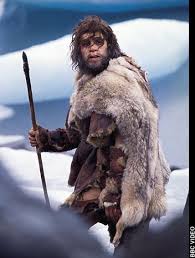 Neanderthal: It is most probable that in Asia, my family was intimately introduced to Neanderthals. The Neanderthal were a group of humans closely related to modern humans. They left traces in Asia and Europe as early as 600,000 to 350,000 years ago. When modern humans migrated out of Africa, the Neanderthal welcoming party was waiting. Though the Neanderthal went extinct about 30,000 years ago, we lived side by side for tens of thousands of years. My DNA analysis indicates about 3% of my DNA is a result of interbreeding with Neanderthals.
Neanderthal: It is most probable that in Asia, my family was intimately introduced to Neanderthals. The Neanderthal were a group of humans closely related to modern humans. They left traces in Asia and Europe as early as 600,000 to 350,000 years ago. When modern humans migrated out of Africa, the Neanderthal welcoming party was waiting. Though the Neanderthal went extinct about 30,000 years ago, we lived side by side for tens of thousands of years. My DNA analysis indicates about 3% of my DNA is a result of interbreeding with Neanderthals.
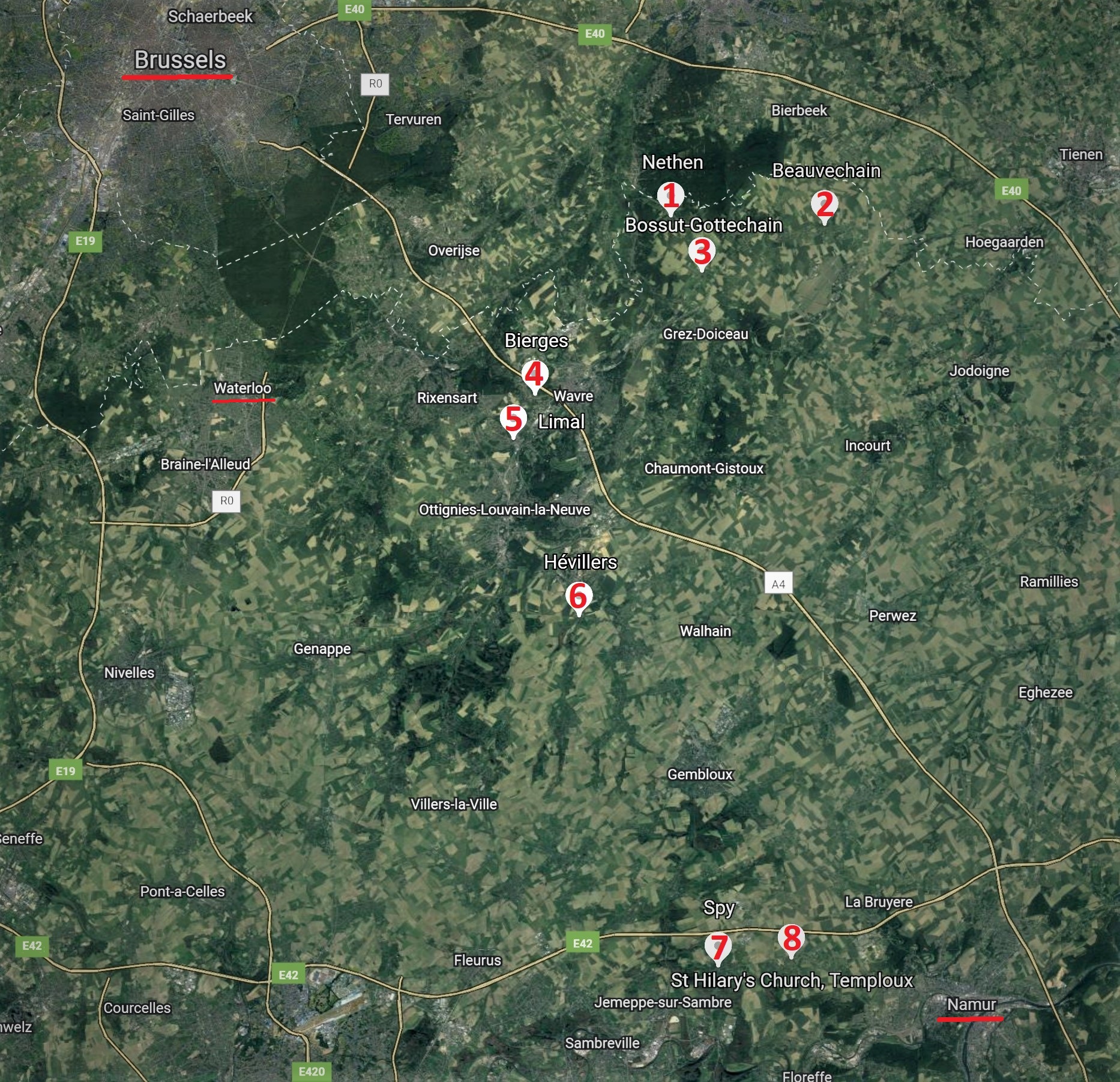
Location of my Belgian Family from at least 1600 until 1850-70
![]() Female Lineage: K cousins spread from the Near East into Europe about 15,000 to 12,000 years ago, as the Ice Age was ending and temperate forests spread over the continent. They are still found in small numbers in most European populations, where many branches of the haplogroup K match identical ones from the Near East. That close similarity suggests that more recent migrations also may have carried haplogroup K from the Near East to Europe, perhaps in conjunction with the spread of agriculture about 8,000 years ago. Haplogroup K is found in about 12% of the Belgian population.
Female Lineage: K cousins spread from the Near East into Europe about 15,000 to 12,000 years ago, as the Ice Age was ending and temperate forests spread over the continent. They are still found in small numbers in most European populations, where many branches of the haplogroup K match identical ones from the Near East. That close similarity suggests that more recent migrations also may have carried haplogroup K from the Near East to Europe, perhaps in conjunction with the spread of agriculture about 8,000 years ago. Haplogroup K is found in about 12% of the Belgian population.
![]() Male Lineage: During the Ice Age, haplogroup R1b was confined to the area around the Mediterranean Sea. The largest group was in the Iberian Peninsula and southern France, where our cousins created the famous cave paintings at Lascaux and Altamira. They also hunted mammoth, bison and other large game in a climate that was more like present-day Siberia's than the mild conditions of the Southern Europe that we enjoy today.
Male Lineage: During the Ice Age, haplogroup R1b was confined to the area around the Mediterranean Sea. The largest group was in the Iberian Peninsula and southern France, where our cousins created the famous cave paintings at Lascaux and Altamira. They also hunted mammoth, bison and other large game in a climate that was more like present-day Siberia's than the mild conditions of the Southern Europe that we enjoy today.
Some men bearing R1b Y-chromosomes also seem to have spent the Ice Age in the Balkans and Anatolia (Asia Minor), where the haplogroup is still present today. Today, R1b1b2 is the most common haplogroup in Western Europe; it is found in more than 50% of men. An even higher concentration can be found in France, Spain, and the Netherlands. (I have found no study specific to Belgium.)
Into Belgium: As the Ice Age ended, about 12,000 years ago, haplogroups advanced from Asia into Europe as the glaciers retreated. The spread of agriculture about 8,000 years ago may have brought more Asian migration into Europe. Undoubtedly, these migrations were responsible for bringing my ancestors into the area that is present-day Belgium.
The Pirlot branch has been located in Nethen, Grez-Doiceau, Belgium as far back as 1796. The Deprez branch has been located in Beauvechain, Brabant Wallon, Belgium as far back as 1625. The Motquin branch has been traced as far back as 1600 in Temploux, Namur, Belgium.
| Town | Province, Region | Family Name |
|---|---|---|
| 1 Nethen of Grez-Doiceau | Walloon Brabant, Wallonia | Snaps |
| 2 Beauvechain | Walloon Brabant, Wallonia | Deprez, Lorimier, Schayes |
| 3 Bossut-Gottechain of Grez-Doiceau | Walloon Brabant, Wallonia | Pirlot |
| 4 Bierges | Walloon Brabant, Wallonia | Froncée |
| 5 Limal of Wavre | Walloon Brabant, Wallonia | Froncée |
| 6 Hévillers of Mont-Saint-Guibert | Walloon Brabant, Wallonia | Clare, Froncée, Paulus |
| 7 Spy of Jemeppe-sur-Sambre | Namur, Wallonia | Gillard |
| 8 Temploux | Namur, Wallonia | Motquin |
 Neanderthal: Though Neanderthal caves and remains can be found within a few miles of my family home in Belgium, all current evidence indicates that my family did not arrive in Belgium until long after the Neanderthal went extinct. Thus, the 3% of my DNA that comes from Neanderthals is most probably a genetic gift received in Asia.
Neanderthal: Though Neanderthal caves and remains can be found within a few miles of my family home in Belgium, all current evidence indicates that my family did not arrive in Belgium until long after the Neanderthal went extinct. Thus, the 3% of my DNA that comes from Neanderthals is most probably a genetic gift received in Asia.
However, Neanderthal appear to have been living on the Iberian peninsula during the migration of humans into Southern Europe. And, since we share DNA characteristics with peoples from that area (perhaps thanks to the Spanish occupation of Belgium), it is possible that I received another dose of Neanderthal DNA through this route.
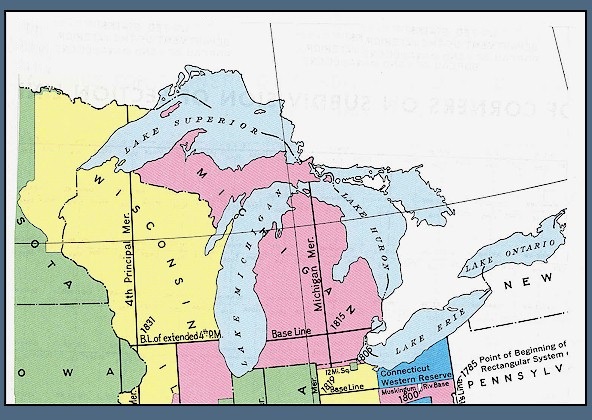 Migration to the United States of America came in the 1850-70s. Belgian immigrants settled on land that the U.S. government had taken from the Menominee Indian Nation beginning in 1831. The land was converted by the immigrants from forest to farm.
Migration to the United States of America came in the 1850-70s. Belgian immigrants settled on land that the U.S. government had taken from the Menominee Indian Nation beginning in 1831. The land was converted by the immigrants from forest to farm.
We can get a bit more specific with timelines, since we are dealing with written records:
The Pirlot branch emigrated from Nethen, Grez-Doiceau, Belgium to Kewaunee County, Wisconsin in the latter half of the 1850s. Some moved to Menominee County, Michigan by 1888. By 1914, some of the Michigan Pirlots moved to back to Wisconsin and settled in Green Bay (Brown County).
The Deprez branch left Beauvechain, Brabant Wallon, Belgium in 1856; the Froncée branch left Hévillers in 1857. They emigrated to Kewaunee County, Wisconsin. Many remained in Kewaunee County while some moved to Brown County.
The Motquin branch left Temploux, Namur, Belgium during some hard times. They emigrated to Door County, Wisconsin in 1871. By 1900 many were located in Green Bay, Brown County, Wisconsin.
Now, in this age of mobility, we live all over the United States.